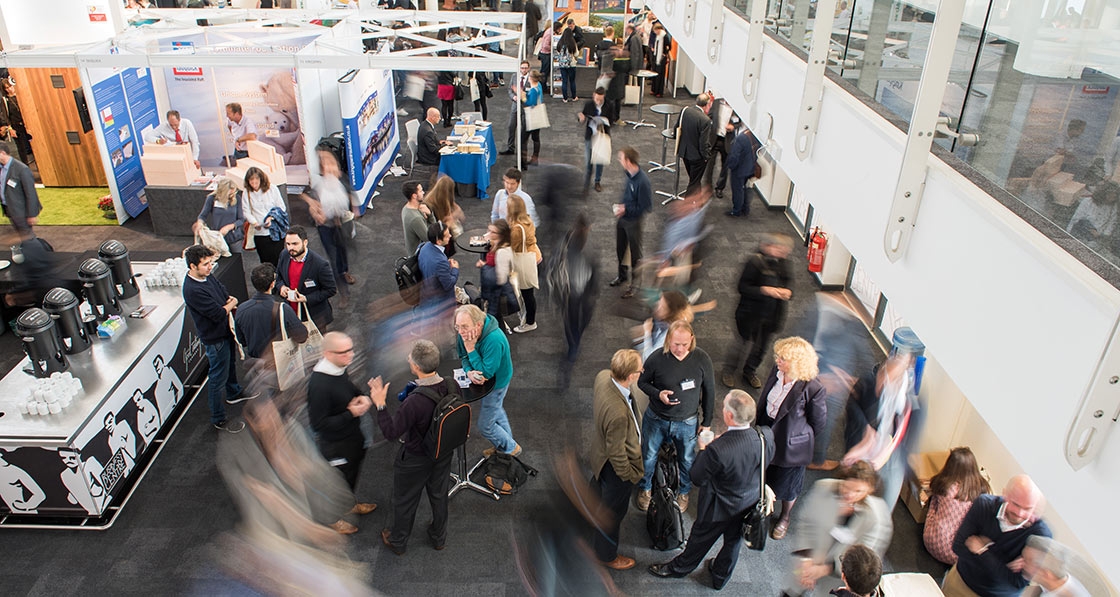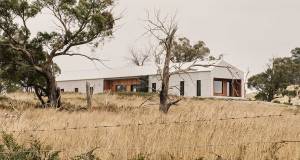
- Events
- Posted
2016 UK Passivhaus Conference gets into detail on delivery
2016’s UK Passivhaus Conference, which took place in London in October, was the biggest yet, with 300 delegates and another 100 visitors to the expo that ran in parallel. Also in attendance were students from half a dozen architecture schools, some of whom had risen before dawn for the chance to attend.
This article was originally published in issue 19 of Passive House Plus magazine. Want immediate access to all back issues and exclusive extra content? Click here to subscribe for as little as €10, or click here to receive the next issue free of charge
The focus of the conference was on how to deliver the passive house standard. Conference and Passivhaus Trust chair Chris Herring, and Passivhaus Trust chief executive Jon Bootland, were both confident that passive house was entering the big time in the UK. “This is an exciting moment for passive house — it is just starting to touch the mainstream, and engaging mainstream firms,” Jon Bootland said.
The fact that mainstream developers and contractors are now looking to achieve passive house, was both essential and potentially dangerous, Chris Herring said. He was echoed by Sally Godber of Warm. who commented: “Promoting passive house in the mainstream is a bit scary, it takes us outside our comfort zone, but we have to do this.”
“The challenges are not just technical, they are also cultural,” Chris Herring explained. “Passive house needs a culture of collaboration and openness to develop throughout the industry – not currently a feature here.”
The conference also heard insights from both seasoned passive house designers and clients – but invaluably, also from contractors. The clear message was that passive house requires extra effort. And the extra effort needs to be planned in right from the start, to avoid unnecessary costs, delays and frustration.
As Emma Osmundsen of Exeter City Council – who have pledged to build only to the passive house standard – explained: “You want all the professionals involved to recognise that passive house requires something extra, to accept that it does take longer both at the design stage, and on site, and costs will be higher, so the client can have realistic expectations. Give the client a realistic programme. They need to know.”
A more open and less adversarial approach was urged by everyone who spoke on the subject. Collaboration releases creativity – and releases savings. But people will only feel confident in sharing their ideas and past experiences if there is trust and honesty.
Contractor Steve Healy of DCH Construction favours an open book approach, enabling true collaboration, whenever possible. Honesty and sharing is also required in the internal culture of firms, he added. “It is important that everyone realises that little mistakes, like nicking a membrane, will be found out in the end, so it’s much easier to be open and deal with them right away.”
The question of which form of contract is ‘best’ came up several times. While some teams have preferences, if there was a consensus, it was that all forms can work well, and all also have the potential to go badly wrong, as both Bill Butcher of Green Building Store, and Jono Hines or Architype pointed out.
Getting it right on paper, and ensuring overlap between design and construction in design and build contracts, is important, according to Andrew Conway of Hamson Barron Smith, which is developing plans for at least 80 passive house dwellings on a 100-unit site at Three Score in Norwich. “We spent a lot of time on the employers’ requirements, and we will continue to be involved, to review the contractors’ proposals.”
John Lefever of Hastoe Housing, which has delivered dozens of passive house units, agreed. “One thing we have learned with design and build contracts is to retain the architect,” he said. “It’s now one of our requirements.”
Lead time between the appointment of the contractors and starting on site was often badly squeezed – yet with some forms of contract it was particularly important to allow time here, as several speakers made clear, because it was only then that the contractor could invest input into the design without risk.
As well as investigating the experience, formal qualifications and commitment to training of potential contractors, face-to-face discussions were the unbeatable way to explore the attitude of the contractor, which can make or break the success of a passive house project.
A willingness to learn on all sides was the key to success. “We need to learn from each other,” architect Chris Parsons stressed. John Lefever of Hastoe cited this as a reason to go with design and build contracts. “We don’t know everything. We hope the contractor will bring their ideas.”
Design input from the contractor is important because they are best placed to advise about buildability and point out hidden costs. When tendering, contractor Steve Healy warned the “best price” might not be the cheapest in the end. “If contractors are competing on price, they may do all they can to lower the price on site – meaning you don’t get exactly what you have asked for. Prices might also be too low because the contractor simply does not realise what is involved. This would be bad news for the contractor – but also bad news for the client.”
With larger passive house projects it is also important to formalise the fine-tuning process post handover, and see the ‘soft landings’ process as an integral part of the build. Hamson Barron Smith have taken care to include provision for soft landings in their contracts for the Three Score development.
Jessica Grove Smith of the Passive House Institute reported on similar process with pioneering passive house hotels in different and challenging climates in China.
Conference chair Chris Herring closed the event by reflecting on the meteoric progress of passive house in the UK. “It is just seven years since the first passive house was certified in the UK. Now we have got to the stage where clients like Exeter City Council feel passive house is ‘old hat’.”
That is quite an achievement, and despite much disenchantment at the lack of official support from central government, progress shows no sign of slowing down.






